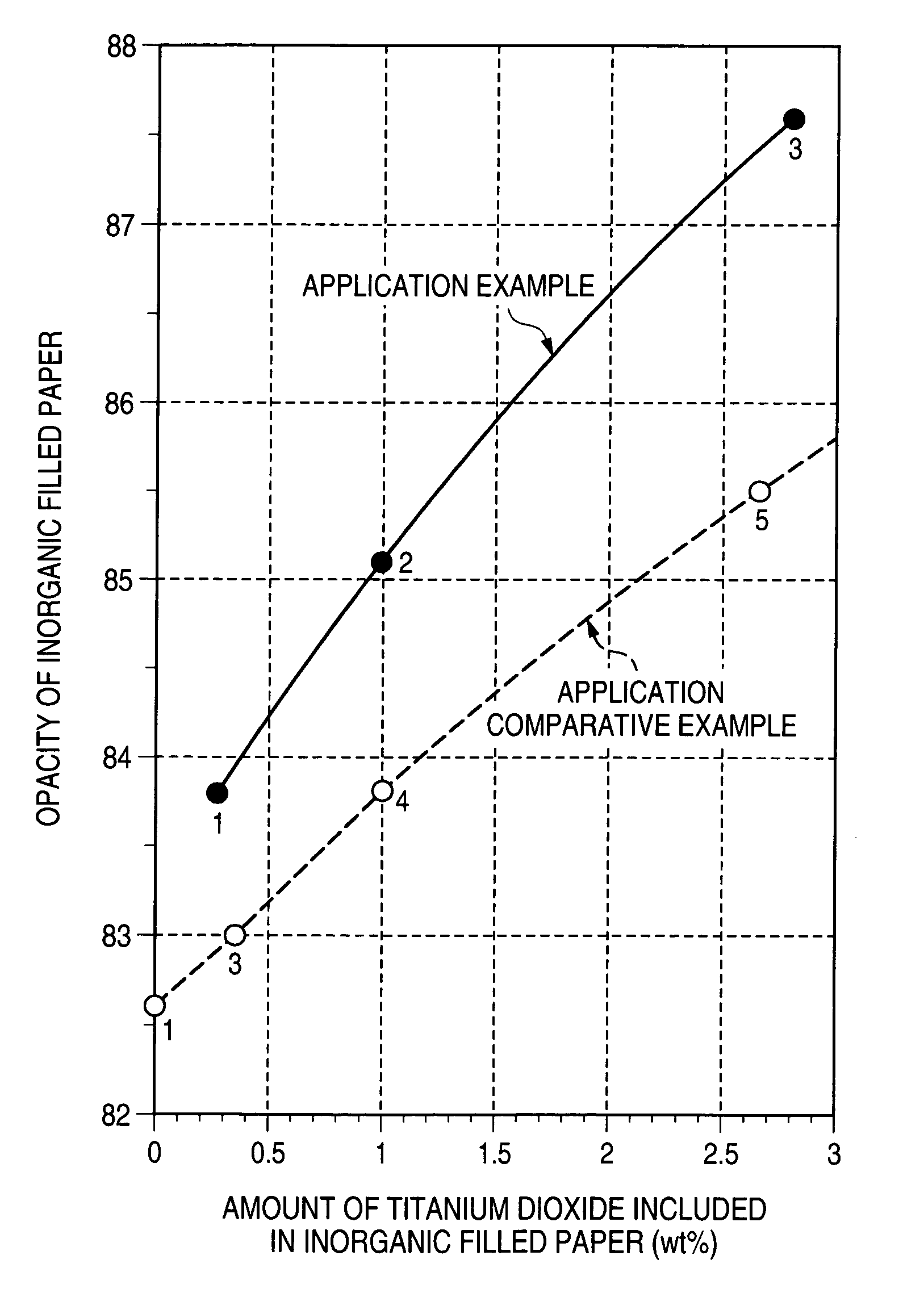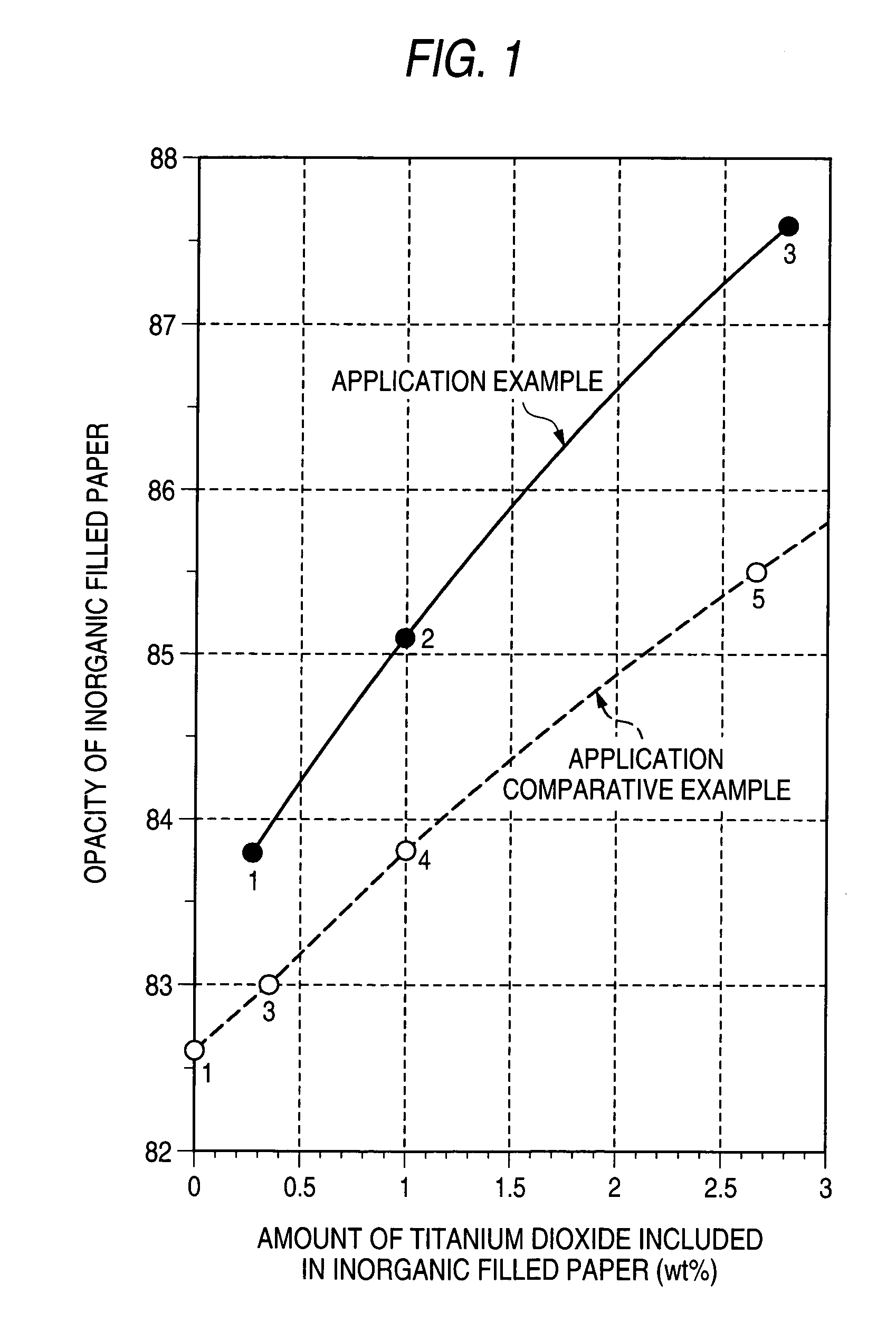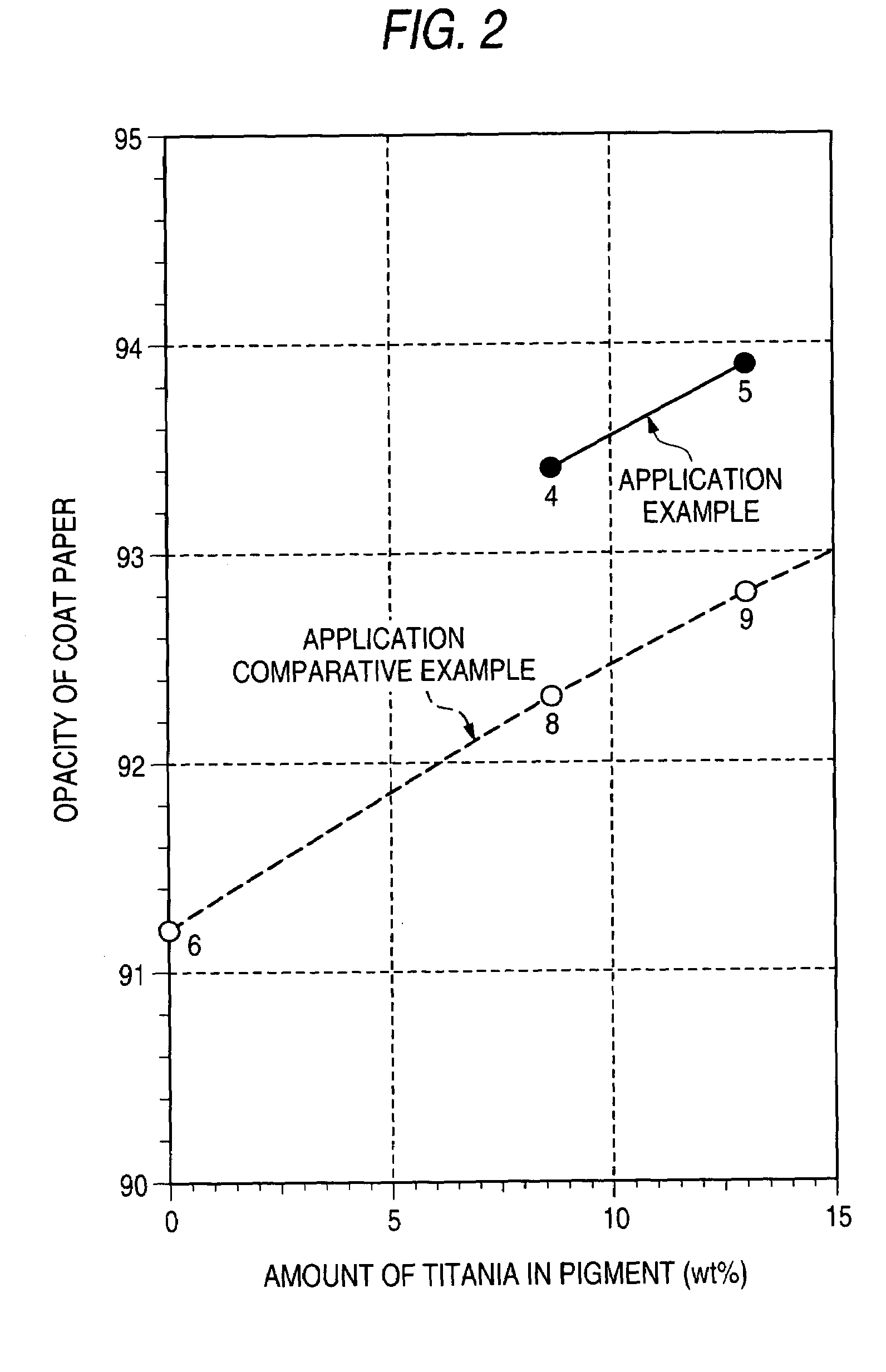Titanium dioxide-calcium carbonate composite particles
a technology of titanium dioxide and composite particles, which is applied in the field of titanium dioxidecalcium carbonate composite particles, can solve the problems of insufficient realization of the opacity-enhancing effect inherent in titanium dioxide, decrease in paper opacity, and heterogeneous distribution of titanium dioxide particles in paper, so as to achieve the effect of enhancing the opacity, low yield ratio, and high viscosity
- Summary
- Abstract
- Description
- Claims
- Application Information
AI Technical Summary
Benefits of technology
Problems solved by technology
Method used
Image
Examples
example 1
[0050]Into 1 L of tap water heated to 70° C. was charged 135 g of quick lime for industrial use, and the whole was stirred for 30 minutes to slake the quick lime. Thereafter, slaked residue was removed with a 100 mesh sieve and then tap water was added thereto to prepare 2.0 L of a slaked lime slurry having a concentration of 80 g / L. After the addition of 6.0 g of rutile-type titanium dioxide having an average particle diameter of 0.25 μm (CR-50 manufactured by Ishihara Sangyo) to the slaked lime slurry, the slurry temperature was controlled to 30° C. and then carbon dioxide was introduced in a rate of 0.35 L / minute to carry out carbonation. The reaction was terminated when pH of the slurry became 7, whereby titanium dioxide-calcium carbonate composite particles were obtained.
[0051]When the resulting product was subjected to chemical analysis, the content of titanium dioxide was found to be 2.5% by weight (2.6 parts by weight of titanium dioxide based on 100 parts by weight of calci...
example 2
[0052]Titanium dioxide-calcium carbonate composite particles were obtained by conducting operations similar to those in Example 1 with the exception that the amount of titanium dioxide to be added was changed to 20.0 g.
[0053]When the resulting product was subjected to chemical analysis, the content of titanium dioxide was found to be 8.7% by weight (9.6 parts by weight of titanium dioxide based on 100 parts by weight of calcium carbonate). Moreover, when the product was observed on a scanning electron microscope, titanium dioxide was provided on the surface of spindle-shape calcium carbonate having a major axis of 2.0 μm and a minor axis of 0.4 μm and independent titanium dioxide particles were not confirmed.
example 3
[0054]Titanium dioxide-calcium carbonate composite particles were obtained by conducting operations similar to those in Example 1 with the exception that the amount of titanium dioxide to be added was changed to 60.0 g.
[0055]When the resulting product was subjected to chemical analysis, the content of titanium dioxide was found to be 26.5% by weight (36.4 parts by weight of titanium dioxide based on 100 parts by weight of calcium carbonate). Moreover, when the product was observed on a scanning electron microscope, titanium dioxide was provided on the surface of spindle-shape calcium carbonate having a major axis of 2.0 μm and a minor axis of 0.4 μm and independent titanium dioxide particles were not confirmed.
PUM
| Property | Measurement | Unit |
|---|---|---|
| particle diameter | aaaaa | aaaaa |
| diameter | aaaaa | aaaaa |
| diameter | aaaaa | aaaaa |
Abstract
Description
Claims
Application Information
 Login to View More
Login to View More - R&D
- Intellectual Property
- Life Sciences
- Materials
- Tech Scout
- Unparalleled Data Quality
- Higher Quality Content
- 60% Fewer Hallucinations
Browse by: Latest US Patents, China's latest patents, Technical Efficacy Thesaurus, Application Domain, Technology Topic, Popular Technical Reports.
© 2025 PatSnap. All rights reserved.Legal|Privacy policy|Modern Slavery Act Transparency Statement|Sitemap|About US| Contact US: help@patsnap.com



